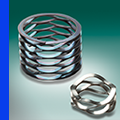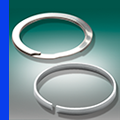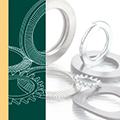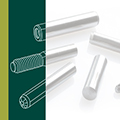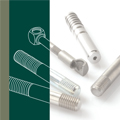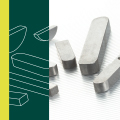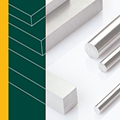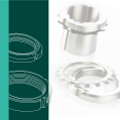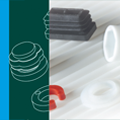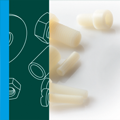Depending upon the dimensions of the disc spring, it is possible to achieve load/deflection characteristic curves which are nearly linear or strongly curved. The form of the disc spring characteristic curve is dependent upon the ratio ho/t or K4 · (h'o/t').
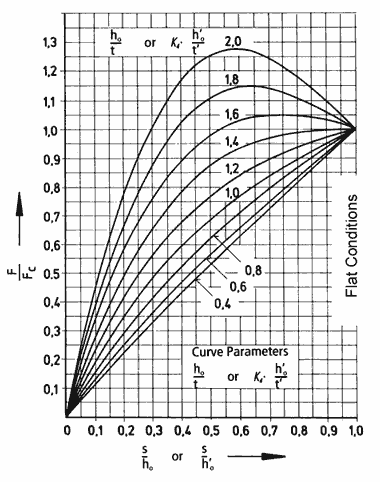
Figure 3
Calculated Load/Deflection Characteristic Curve Dependent Upon the Curve Parameter ho/t or K4 · (h/t').
In practice at small deflections the measured load/ deflection curves will deviate slightly from the theoretical. Near the flat condition the load/deflection curve becomes strongly progressive due to the shortening of the lever arm of the force application point as the disc spring "rolls" onto the load applying elements.
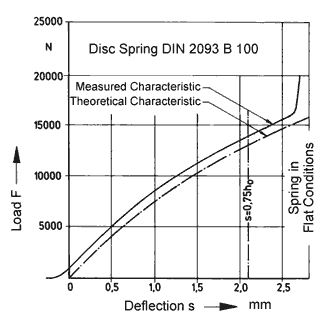
Figure 4
Calculated and Measured Spring Load/Deflection Characteristic Curve of the Single Disc Spring.
For selected applications, special, custom made disc springs can be designed from selected materials with certain stress characteristics which allow the disc spring to travel beyond the flat condition without any damage to the spring. This is of special interest when larger amounts of spring deflection are required with very small (or even negative) changes in load.
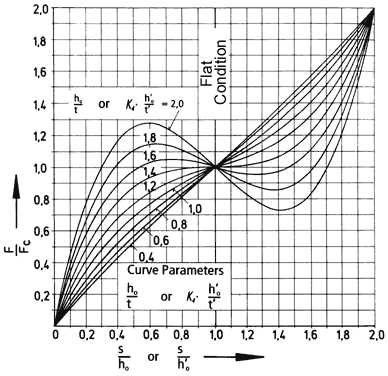
Figure 5
Calculated Load/Deflection Characteristic Curve both sides of the Flat Condition as a Function of the Curve Parameter ho/t as well as K4 · (h'o/t').
However, it is then necessary to use suitably shaped load applying element(s); for example, the load applying element(s) may have a slightly conical shape (as illustrated below).
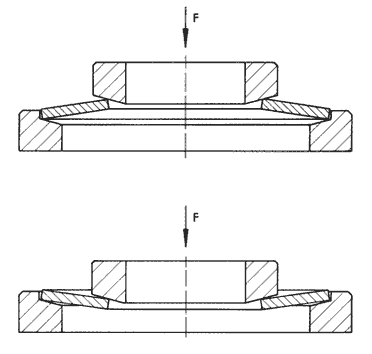
Figure 6
Conically Shaped Load Applying Element for Disc
Classification of Disc Springs in Series A, B and C (After DIN 2093)
For every diameter combination in the DIN 2093 Disc Spring Standard, there are three disc springs with the following characteristics:
Table 4
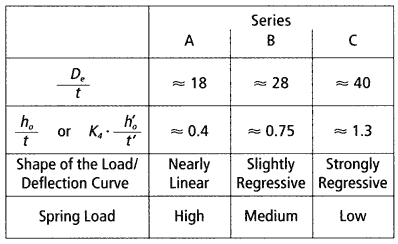
Disc springs made to the internal CB works standards (either inbetween sizes to DIN 2093 disc springs or sizes larger than are defined in DIN 2093) are also according to this schematic.
Disc springs which are made to Series A, B and C specifications are marked accordingly in the Tables (Sections 16 through 18).




